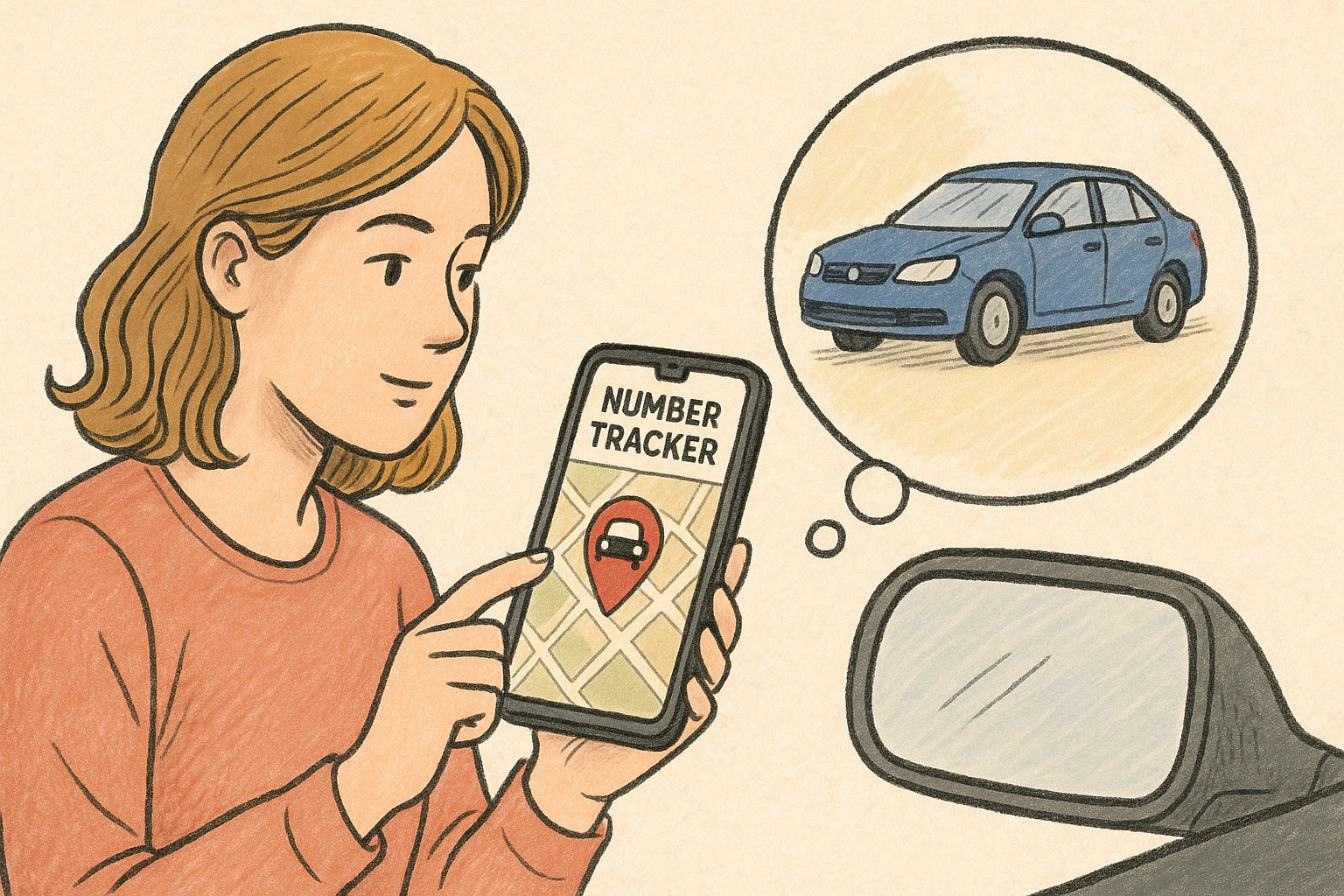In today’s hyper-connected world, where smartphones, smart homes, and smart vehicles are the norm, your privacy on the road is no longer a given. What seems like an ordinary commute could be silently monitored—without your consent—by a small GPS device cleverly tucked under your vehicle or wired into its systems.
This isn’t science fiction. It’s a growing reality. Whether it’s an employer checking up on staff, a suspicious partner, or worse—a stalker—knowing how to find a GPS tracker on your car has become an essential safety skill.

Why Would Someone Hide a GPS Tracker in Your Car?
Let’s begin with the fundamental question: Why would anyone hide a tracker in your vehicle in the first place?
While GPS tracking itself isn’t illegal, doing so without your knowledge or consent is a violation of personal privacy and, in many cases, the law. Yet, motives vary widely:
| Reason | Explanation |
| Vehicle Theft Recovery | Some car owners or dealerships place trackers to retrieve vehicles if stolen. |
| Monitoring Teen or Employee Behavior | Parents or employers may track driving habits or locations. |
| Personal Surveillance | Jealous partners or suspicious spouses may engage in unethical monitoring. |
| Malicious Intent or Stalking | In the most dangerous cases, stalkers use trackers to follow victims. |
Regardless of the reason, unauthorized tracking infringes on your freedom and safety.
Types of Hidden GPS Trackers
To uncover these hidden devices, it’s crucial to first understand what you’re looking for. GPS trackers come in a few basic types:
1. Battery-Powered Trackers
These are small, wireless, and magnetized. They can be hidden almost anywhere on a car, especially outside near metal surfaces.
2. Hardwired Trackers
These are integrated directly into the car’s electrical system. Typically used by professionals, they’re more discreet and difficult to detect.
3. OBD-II Trackers
Plug-and-play devices that connect directly into the car’s On-Board Diagnostics (OBD-II) port, often beneath the steering column. Easy to install and remove, and common in fleet tracking.
Knowing which type you’re dealing with helps you narrow down the likely hiding spots.
Most Common Hiding Spots for GPS Trackers
Most hidden GPS trackers are placed where they can operate effectively without drawing attention. When starting your search, focus on these top five locations:
- Under the Car’s Frame
- Magnetic trackers are often attached to the metal chassis.
- Use a flashlight and a mirror to check corners and crevices.
- Wheel Wells & Bumpers
- These spots provide easy access and concealment.
- Check for unusual objects or dangling wires.
- OBD-II Port
- Located beneath the dashboard near the steering wheel.
- Look for unfamiliar devices plugged in.
- Trunk & Engine Bay
- Behind linings, near the battery or fuse box.
- Look for small plastic boxes or wire additions.
- Cabin Interior (Seats & Glovebox)
- Between seat cushions, under seats, or in the glove compartment.
- Also check near charging ports or under floor mats.
A focused visual and tactile inspection of these areas will help identify any device that seems out of place.
Turn Detective: Your Step-by-Step Search Protocol
Now that you understand the types of trackers and the most likely places they’re hidden, it’s time to get tactical. Locating a hidden GPS tracker isn’t about ripping your car apart—it’s about knowing where to look, what to look for, and how to use the right tools.
Below is a detailed, logical workflow designed for non-professionals. You don’t need to be a mechanic—just patient, observant, and methodical.
1. Gather Your Tools
Before starting your inspection, assemble a basic toolkit. These inexpensive items make a big difference:
| Tool | Purpose |
| Flashlight | Illuminates dark corners and undersides of the car. |
| Extendable mirror | Lets you inspect hard-to-reach places like wheel wells and undercarriage. |
| Screwdriver/wrench set | For opening access panels or removing small hardware. |
| RF Bug Detector | Scans for active GPS signals and other radio frequencies (optional but helpful). |
| Magnetic Field Detector | Detects strong magnets used in battery-powered trackers. |
These tools, combined with close visual inspection, give you the upper hand.
2. Exterior Inspection: Beneath and Around the Car
This is the most common place for magnetic trackers. Focus on metal surfaces and crevices where a small device could be tucked away.
- Undercarriage: Slide under the car (carefully, with the parking brake engaged) and look along the frame rails and corners.
- Wheel Wells: Remove any plastic liners if possible, or use your mirror to check for anomalies.
- Bumpers: Both front and back, especially under the lip where it’s easy to clip something unnoticed.
- Roof Racks & Exhaust Area: Less common but worth a glance.
Look for objects the size of a deck of cards or smaller, especially black plastic boxes or devices with LED indicators.
3. Interior Sweep: Look Where You Sit
Now step inside your vehicle and do a slow, thorough scan.
- Under Seats: Shine your flashlight under both front and rear seats. Run your hand gently across the carpet and between cushions.
- Glove Compartment & Storage Pockets: Check for electronics or wires that weren’t installed by you.
- Dash Panels & Charging Ports: Look under the dashboard. If you see taped-on boxes or unfamiliar wiring, proceed with caution.
- Floor Mats & Carpet Corners: Some trackers are slipped under mats or between the carpet and the car floor.
If your car has recently been serviced or accessed by someone else, pay extra attention to the areas they might’ve had access to.
4. Check the OBD-II Port
Many modern trackers are simply plugged into your car’s diagnostics port. It’s fast, easy—and for the person installing it, requires no tools.
- Location: Usually beneath the steering wheel, near the brake pedal.
- What to Look For: Any unfamiliar device plugged into the port, especially with lights, antennas, or external wires.
- What to Do: Unplug it and research the device brand/model to verify if it’s a GPS tracker.
Some fleet management systems use these for legitimate purposes, so double-check before discarding.
5. Inspect Engine Bay & Trunk
Though less common due to higher temperatures and complexity, professional-grade hardwired trackers may be hidden here.
- Engine Bay:
- Examine the area near the battery and fuse box.
- Look for zip-tied wires, taped components, or unfamiliar plastic enclosures.
- Trunk:
- Lift the carpet lining and check the spare tire compartment.
- Inspect behind any removable panels or under plastic trays.
If anything is spliced into your car’s wiring without clear labeling, document it and seek a professional opinion.
6. Use Detection Technology
For a more high-tech approach or to confirm your suspicions, use electronic scanning devices:
| Tool | Function |
| RF Bug Detector | Scans for radio frequencies from active GPS trackers or hidden microphones. |
| Magnetic Field Sensor | Detects magnets used to attach devices to metal surfaces. |
| Number Tracker App | Offers signal strength-based device locating features (more on this below). |
Even if the tracker isn’t actively transmitting, these tools can help identify suspicious hardware for further inspection.
7. Call in the Experts (When Needed)
If your search turns up nothing, but you still suspect tracking, it might be time to involve a trusted mechanic or vehicle security expert. They can perform a deeper diagnostic check—especially important for detecting hardwired or well-disguised trackers.
Pro tip: Document everything you find, especially if you intend to report unlawful surveillance to authorities or consult legal advice.

